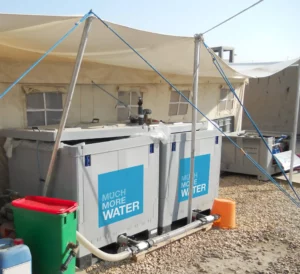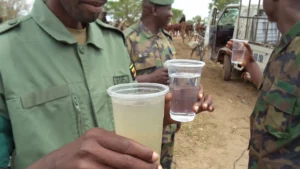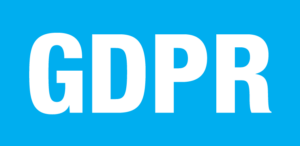This website uses cookies so that we can provide you with the best user experience possible. Cookie information is stored in your browser and performs functions such as recognising you when you return to our website and helping our team to understand which sections of the website you find most interesting and useful.

CLEAN WATER. FOR EVERYONE.
Emergency clean water solutions – Saving lives when it matters most
 In the aftermath of natural disasters like floods, hurricanes, war and earthquakes, the need for clean water becomes a matter of life and death.
In the aftermath of natural disasters like floods, hurricanes, war and earthquakes, the need for clean water becomes a matter of life and death.
At MuchMoreWater we understand that in these critical moments, clean water is a lifeline. The equipment is manufactured from best-in-class quality components to obtain very compact, lightweight, and mobile water cleaning systems.
The crucial role of clean water
 Clean water is indispensable for several reasons:
Clean water is indispensable for several reasons:
- Disease Prevention: Contaminated water can lead to deadly diseases. Clean water is the first defence against such threats.
- Hydration and Nourishment: Clean water is essential for drinking and food preparation, ensuring survivors’ well-being.
- Medical Care: It’s vital for patient treatment and sterilization of medical equipment.
- Hygiene: Enables personal hygiene, crucial for health and dignity.
- Recovery: Restores a sense of normalcy, aiding in the recovery process.
Clean water for everyone – are you in?
Join us in our mission to make a difference where it matters most, providing hope and healing through clean water in the toughest times.
Explore our solutions and be part of the life-saving journey.
Reliable clean water for military operations
 In the field, easy access to safe, dependable clean water is mission critical. At MuchMoreWater we provide trusted water treatment solutions for military personnel. The equipment is manufactured from best-in-class quality components to obtain very compact, lightweight and mobile water cleaning systems.
In the field, easy access to safe, dependable clean water is mission critical. At MuchMoreWater we provide trusted water treatment solutions for military personnel. The equipment is manufactured from best-in-class quality components to obtain very compact, lightweight and mobile water cleaning systems.
The Significance of clean water in military operations
- Health and Readiness: It sustains performance and prevents waterborne illnesses needing up to 10 litres per day in hot areas.
- Logistical Efficiency: Our on-site water treatment reduces the need to transport bottled water.
- Operational Flexibility: Our portable systems support deployments in diverse environments from small teams to large camps.
Trusted water treatment solutions
MuchMoreWater water purification soloution is the preferred choice because:
- Proven performance: Our machines have a track record of reliability in challenging conditions from more than 35 countries.
- Rapid deployment: Quickly transport and set up our portable systems in remote locations. We supply robust, easy to operate and compact solutions.
- Safety assurance: We meet stringent safety standards for peace of mind from any water source.
MuchMoreWater water purification is the reliable choice for clean water solutions that support mission success.
The vital significance of clean water: Key statistics
Statistics related to the importance of clean water can be powerful arguments for emphasizing the critical role of access to safe and clean water.
- Waterborne diseases: Millions of people worldwide suffer from waterborne diseases annually. For example, the World Health Organization (WHO) estimates that around 485,000 deaths occur each year due to diarrheal diseases caused by unsafe drinking water, sanitation, and hygiene practices.
- Child mortality: Unsafe water and lack of sanitation and hygiene are major contributors to child mortality. According to UNICEF, approximately 1,000 children under the age of five die every day due to diarrhea linked to inadequate water, sanitation, and hygiene.
- Hospitalizations: Many people are hospitalized due to water-related illnesses. The exact number can vary by region and year, but it often represents a substantial burden on healthcare systems. These hospitalizations include cases of severe diarrhea, cholera, and other waterborne diseases.
- Economic impact: Lack of access to clean water has significant economic consequences. The United Nations estimates that the economic cost of inadequate water supply and sanitation can be as high as 2.5% of the gross domestic product (GDP) of some developing countries, mainly due to healthcare costs and lost productivity.
- Impact on education and gender disparities: In many regions, children, especially girls, are responsible for collecting water for their families. The time spent on this task can limit their access to education, reinforcing the cycle of poverty.
- Water scarcity: Beyond water quality, water scarcity is a growing global issue. Approximately 2.2 billion people lack access to safe drinking water, and by 2050, it’s projected that almost half of the world’s population will be living in water-stressed areas.
- Humanitarian crises: In emergency situations like natural disasters and conflicts, the need for clean water becomes even more critical. Millions of people in crisis situations depend on humanitarian organizations for access to clean water.
- Global goals: Access to clean water and sanitation is a key part of the United Nations Sustainable Development Goals (SDGs). Goal 6 aims to ensure availability and sustainable management of water and sanitation for all by 2030.
Transforming challenging water sources into potable gold
At MuchMoreWater our cutting-edge Ultrafiltration (UF) and Reverse Osmosis (RO) technologies empower us to turn even the most challenging water sources into life-sustaining, potable water. Here’s a glimpse of what we can achieve:
- Lake water: Lakes are invaluable natural water reservoirs, but they can often be contaminated by organic matter, sediments, and algae. Our UF and RO systems excel at removing impurities, ensuring that communities near lakes can have access to clean, safe drinking water.
- River water: Rivers can be susceptible to pollution from industrial discharges, agricultural runoff, and human activity. Our advanced filtration and membrane technologies effectively remove pollutants, safeguarding the health of those relying on river water.
- Borehole water: Borehole water often contains high mineral content, making it brackish or even saline. Our RO systems are designed to desalinate such water, making it suitable for consumption, irrigation, and industrial use.
- Brackish water: Coastal regions frequently face the challenge of brackish water, which is neither entirely freshwater nor seawater. With our RO technology, we can desalinate brackish water, providing a reliable source of fresh water for coastal communities.
- Seawater: The vast oceans hold a potential reservoir of water, but their high salinity makes them undrinkable. Our RO technology can effectively desalinate seawater, opening new possibilities for coastal regions and islands to access freshwater resources.
- Groundwater: Groundwater is an important source of drinking water for many communities. However, it can contain contaminants such as arsenic, iron, and manganese that need to be removed to make it potable.
- Well water: Well water is commonly used in rural and suburban areas. It can vary significantly in quality and may require treatment to meet drinking water standards.
- Rainwater: Rainwater harvesting systems collect rainwater for various uses, including drinking. Proper treatment is essential to ensure rainwater is safe for consumption.
- Spring water: Springs often provide naturally sourced water, but the purity of spring water can vary. Filtration and treatment may be necessary to make it suitable for drinking.
- Urban runoff: In some urban areas, rainwater runoff can be collected and treated for drinking purposes. This source can help alleviate water shortages in densely populated regions.
- Recycled water: In regions with advanced water treatment infrastructure, treated wastewater can be purified to potable water standards and reused as a drinking water source.
- Industrial effluent: In industrial areas, treated industrial effluent can be further purified to create a safe source of drinking water.
What we remove and why It matters
Precision filtration: removing molecules at the molecular level
Our Ultrafiltration (UF) and Reverse Osmosis (RO) technologies are masters of precision. They target and remove molecules at the molecular level, ensuring that only pure, clean water passes through.
Ultrafiltration (UF): With UF, we capture contaminants and particles that are larger than 0.01 microns in size. This includes bacteria, viruses, suspended solids, and even some large organic molecules. UF is like a molecular sieve, allowing only water and the tiniest of molecules to permeate.
Reverse osmosis (RO): RO takes filtration to the next level, removing molecules as small as 0.0001 microns. It’s the gold standard for desalination, effectively trapping salts, minerals, and virtually all impurities, leaving you with pristine, crystal-clear water.
These technologies don’t just clean water; they transform it into a pure elixir of life. Whether it’s providing safe drinking water from challenging sources or ensuring the highest quality for industrial processes, our UF and RO systems deliver precision you can trust.
Our UF and RO systems are engineered to remove a wide range of impurities, including:
- Pathogens: Bacteria, viruses, and protozoa that can cause waterborne diseases are effectively eliminated, protecting public health.
- Suspended solids: Sediments, debris, and particulate matter are filtered out, improving water clarity and taste.
- Salts and minerals: High levels of salts and minerals can render water undrinkable and harm plumbing systems. RO removes these impurities, ensuring the water is safe and non-corrosive.
- Chemical contaminants: Pesticides, heavy metals, and industrial chemicals are effectively reduced or eliminated, minimizing health risks.
Access to clean water is a basic human right, and with our UF and RO systems, we are committed to making this right a reality for communities around the world. Clean water isn’t just a convenience; it’s a lifeline, promoting health, well-being, and prosperity.
Rigorous standards for safe drinking water
Around the world, stringent water quality standards are in place to ensure the safety of drinking water – both for regions, countries, and organisations. MuchMoreWater purification systems follow international standards and the units can also be individually calibrated to match local standards.
- World Health Organization (WHO): Globally, the WHO sets international standards and guidelines for drinking water quality. These standards provide a framework for countries to assess and maintain the safety of their water supplies. Explore the [WHO’s Guidelines for Drinking-water Quality]
- NATO: The North Atlantic Treaty Organization (NATO) also establishes water quality standards for its members. These standards ensure that water used by NATO forces, including for drinking, meets stringent quality requirements. For further details on NATO water quality standards, please refer to [NATO’s official resources].
- United States: The Environmental Protection Agency (EPA) administers the Safe Drinking Water Act (SDWA), which sets Maximum Contaminant Levels (MCLs) for various contaminants. This ensures that public water systems adhere to rigorous testing and treatment requirements. You can learn more about the SDWA on the [EPA’s Safe Drinking Water Act webpage].
- Europe: The European Union (EU) regulates water quality through the EU Drinking Water Directive. It establishes comprehensive standards covering microbiological, chemical, and indicator parameters, guaranteeing safe and clean water for citizens. For detailed information on EU water quality standards, visit the [European Commission’s page on Drinking Water Quality]
For further details on these standards and parameters, we recommend visiting the provided webpages of the respective regulatory authorities.
Our philosophy: Reliability and ease of use
The water purification units are designed for mobility, and are constructed with robust and high quality materials from well-known brands, with access to spare parts all over the world. The units are also designed for easy maintenance and repair.
